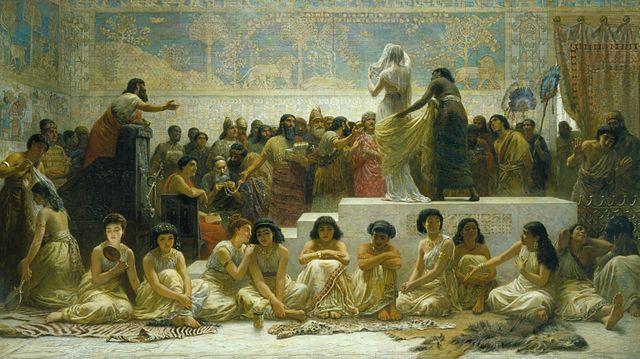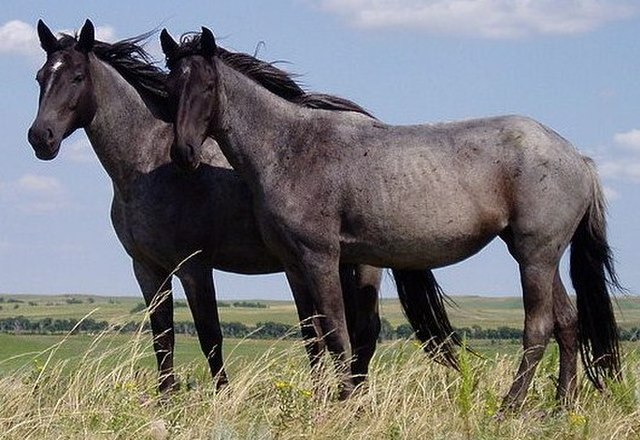An auction is usually a process of buying and selling goods or services by offering them up for bids, taking bids, and then selling the item to the highest bidder or buying the item from the lowest bidder. Some exceptions to this definition exist and are described in the section about different types. The branch of economic theory dealing with auction types and participants' behavior in auctions is called auction theory.
The Babylonian Marriage Market, Edwin Long, 1875.
A Peep at Christies (1796) – caricature of actress Elizabeth Farren and huntsman Lord Derby examining paintings at Christie's, by James Gillray
A late 19th Century auction at the Hôtel Drouot, Paris (painting by Albert Bettannier).
Artemis, Ancient Greek marble sculpture. In 2007, a Roman-era bronze sculpture of "Artemis and the Stag" was sold at Sotheby's in New York for US$28.6 million, by far exceeding its estimates and at the time setting the new record as the most expensive sculpture as well as work from antiquity ever sold at auction.
Livestock are the domesticated animals raised in an agricultural setting in order to provide labour and produce diversified products for consumption such as meat, eggs, milk, fur, leather, and wool. The term is sometimes used to refer solely to animals who are raised for consumption, and sometimes used to refer solely to farmed ruminants, such as cattle, sheep, and goats. Horses are considered livestock in the United States. The USDA classifies pork, veal, beef, and lamb (mutton) as livestock, and all livestock as red meat. Poultry and fish are not included in the category. The latter is likely due to the fact that fish products are not governed by the USDA, but by the FDA.
Cattle on a pasture in Austria
Sheep in Écrins National Park (France)
This Australian road sign uses the less common term "stock" for livestock.
Image: Nokota Horses cropped








